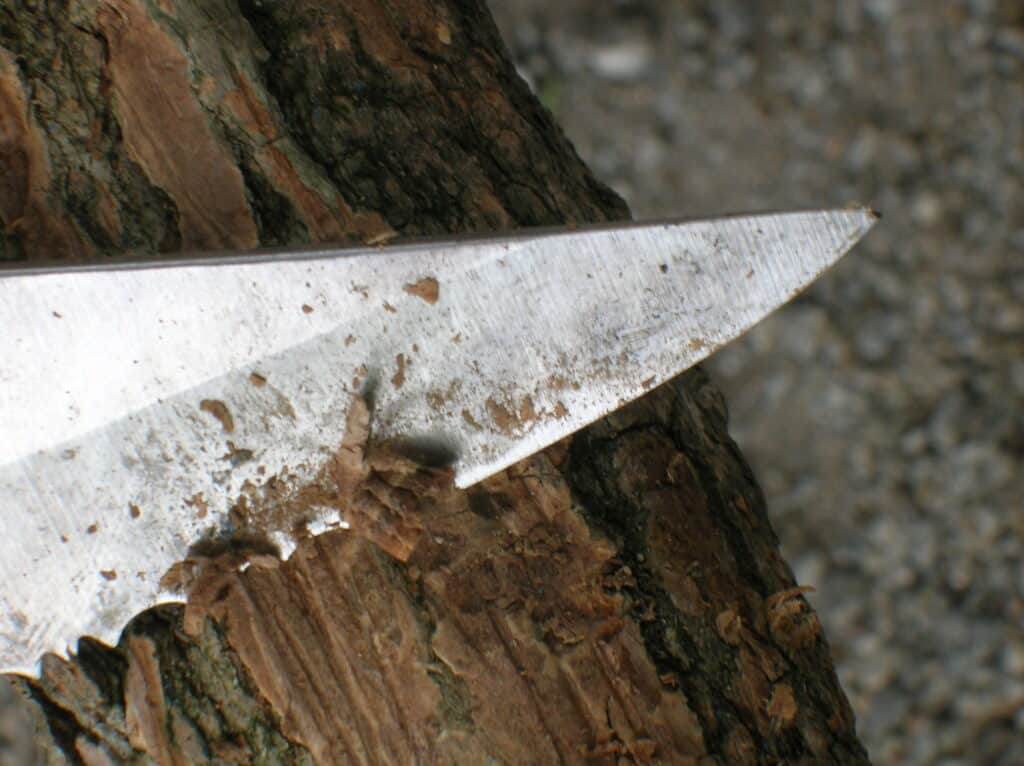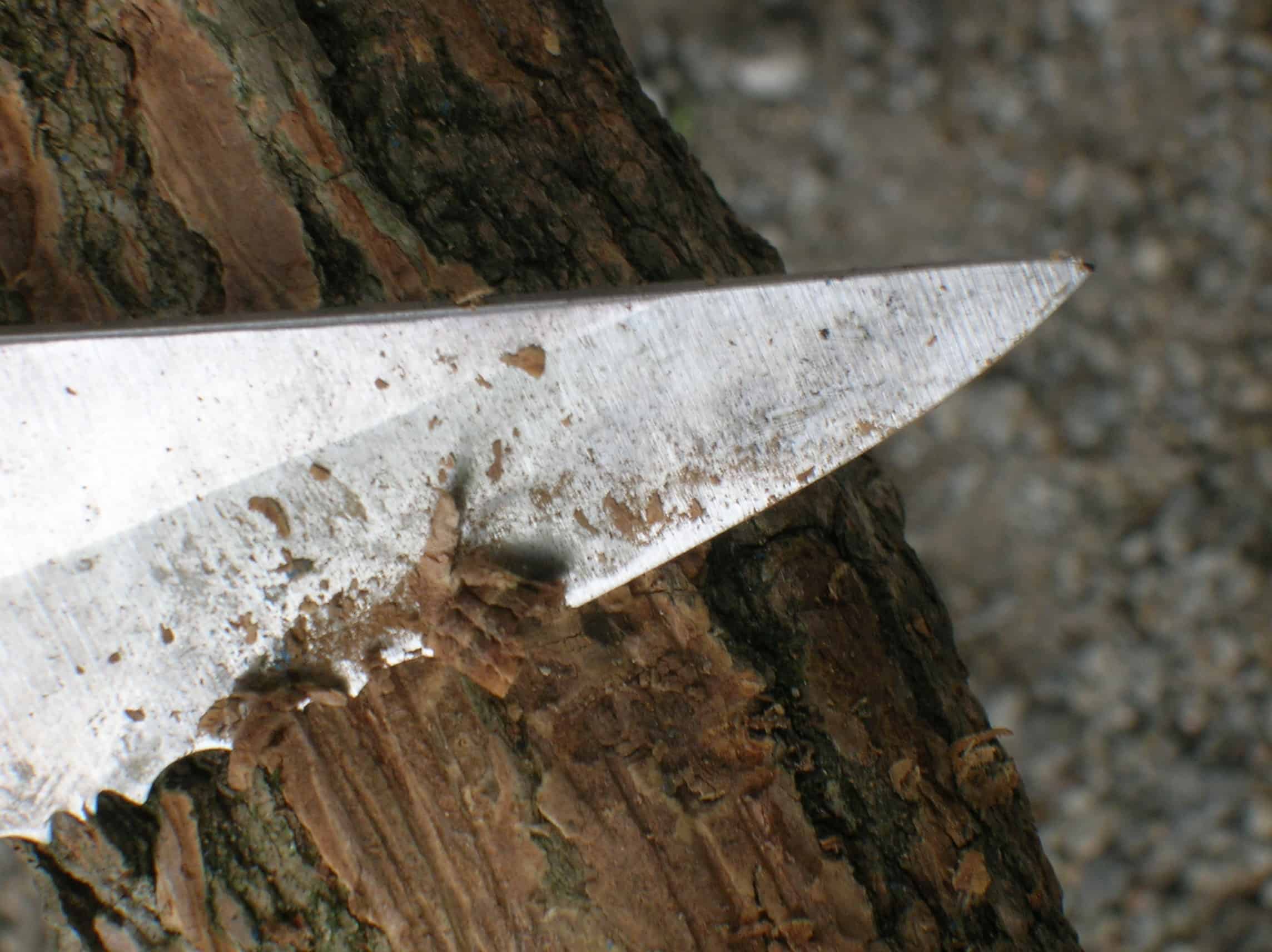Most people have an issue with telling a dull knife apart from a sharp one. Just cutting a vegetable or a branch from a tree is not enough, and it isn’t a proper test. Even a dull knife can cut, even hurt someone but usually requires much more force and energy than a sharp one. But, how to tell if a knife is sharp enough?
Well, by performing some of the tests listed below.
1. The Paper Cutting Test
Most people have tried cutting a piece of paper with a knife, but how is it done properly, which result is a good one?
Begin by tearing off a piece of paper and placing the blade of the knife over the paper at an angle, then slowly pull the knife towards yourself and let its weight cut through the paper, sometimes a little bit of force is necessary to cut into the paper. There are two possible outcomes, either the paper splits with a sharp line or it is torn as if you tried to rip paper off, a cut made with a sharp knife will look ‘clean’.
Another way of performing the same test is to hold the paper with one hand and lift the knife above the paper and just ‘hit’ the paper, expect about the same result as above. A dull knife will either squish the paper, tear it apart as if you have done it with hands.
2. The Shaving Test
I remember my grandfather showing me this one, once he pulled out his knife he used to always keep on him, he added a little bit of saliva that he rubbed on his arm and began by cutting his arm hair by placing the knife over the moist skin and pulling it towards him, the hair came right off and had a ‘clean shave’, his skin was spotless without a single hair on him.
Since I was curious I gave him one of my own, which I knew was dull, there was no danger but the case was clear, it did not cut a single piece of hair from his other arm.
The point was clear and this test is also an efficient way of telling if your knife is sharp if you are not in possession of a piece of paper.
3. The Tomato Test
The tomato test is often aimed at kitchen knives it also is a good and proper way of testing the sharpness of the knife. All you need is a tomato and a knife to test, rest the knife on top of the tomato and pull towards yourself without applying any weight or pressure on the knife, if the knife cuts cleanly through the tomato you guessed it, it is sharp.
What makes this a good test is that tomatoes are difficult to cut through since the skin is not as soft as the insides of a tomato. A sharp knife will be able to cut through a tomatoes skin and a dull one will either not cut through it, or if you applied enough of a force make a mush out of the tomato.
If you do not have a tomato, an onion is a good alternative.
4. The Fingernail Test
I hope all of you know what a finger nail is, what you might not know is that fingernails are also made out of alpha-keratin, thus also becoming an option for testing the sharpness of a knife.
A common method is to take the edge of the blade and rest it across your nail, preferably thumbnail, it should catch along the nail and not being able to move, do not apply any pressure (mostly so you do not hurt yourself), a sharp knife should not be able to slide, and a dull one the opposite. But keep in mind, this method is not always the best one since a really sharp knife can still manage to slide.
5. Visual Inspection
It is almost impossible to tell the sharpness of a knife by the naked eye since it cannot see all the complexities of a sharpened edge. You will need some assistance in being able to do so, some people even go as far as using microscopes.
Using a microscope and under enough bright light you will be able to see the fine details of the edge and see if there are any imperfections of a burr.
One best way to see the sharpness of a blade is through a scanning electron microscope, but there are a bit expensive and can go up to a few thousand dollars, if you cannot afford the money you can go for the budget alternative like a jewelers loupe.
When using the loupe, make sure to have sufficient light shining on the blade and you might catch some imperfections of the edge of the blade.
Conclusion
To test the sharpness of a knife can be a very simple or very complex process as seen from the examples above. From cutting paper, vegetables and fruit to shaving hair from your arm and using microscopes that cost thousands of dollars.
The main goal is to see if our knife or any blade for that matter is sharp, the differences between a sharp and dull one are huge. There are other ways you can experiment, for example, my relative is a professional when it comes to sharpening knives and made mine so sharp I was able to cut down a small almond tree.
You may also want to take a look at our list of the best self-sharpening knife sets.

Gary Portman is the founder and main author of Knivesadvice.com. With his extensive knowledge and experience, he is committed to assisting people in choosing the perfect knife for their needs. Through his articles, Gary shares valuable insights on various aspects of knives. With his expertise, readers can make informed decisions and find a knife that is tailored to their preferences and requirements. You can find more info about Gary here.

